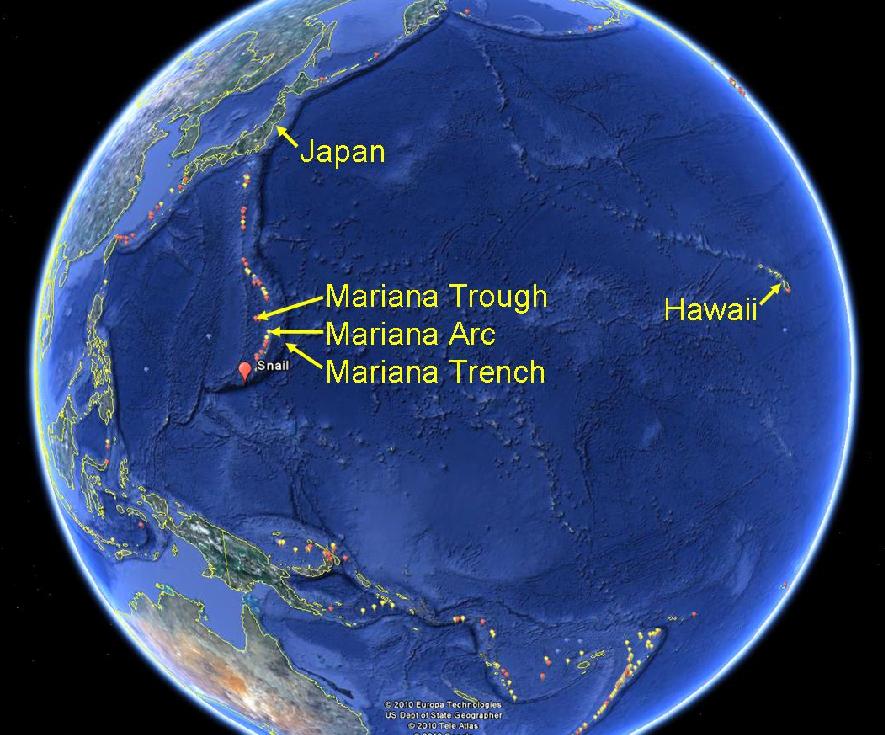
Marianas

Figure 1.--The Marianas like most of Pacific islands were places where time had passed. The Spanish for centuries gave little attention to them. Suddenly with the outbreak of the Pacific War, islanbd tha virtually no olne had ever heard of became frint opage news. When Japan launched the War, they were beyond the range of American bombers. By 1944 the United States had developed the long-range B-29 bomber. And the accident of geography made the Marianas the most valuable islands in the Pacific. The B-29s could reach Japan from bases in the Marianas. Thus the battle for the Marianas essentially decided the outcome of the War.
|
|
The Marianas islands are the most northerly part of the Micronesia island group. They were settled by Chamorro people. The Marianas is an important archepeligo in the central Pacific. The Northern Marianas consists of 14 tropical islands stretching across 400 miles. They are adjacent to the Marianas trench which is the deepest point in the ocean. Saipan is the most populated island in the group. Rota is much less developed. The Northern Marianas were settled around 1500 BC by Chamorros who have cultural ties with the indigenous people on Guam. The pre-colonial population may have totaled 0.1 million peope, but was devestated by European diseases and misdtreatment at the hands of the Spanish. They were part of the Spanish colonial Empire, but Spain tokk only limited interest in them. The Spanish sold most of the islands to the Germans. The United States seized Guam in the Spanish-American War (1898). The Japanese seized the Islands from Germany during World War I and the League of Nations awarded the Japanese a trusteeeship. Because of tge suize of theislands, they were the focus of development efforts. The Japanese in particularly focused on Saipan and large numbers of Japanese settled on the islands. The Islands were the scene of a bitterly fought World War II fighting. The Japanese recognized the importance of the islands. American possession of the islands brought the Home Islands within range of rapidly expanding strategic bomber force. The Japanese deployed the Imperial Fleet in an effort to stop the American landings. The American victory provided bases to begin an air campaign against the Japanese Home Islands. The current government of the Marianas is under a different jurisdiction from most of the rest of Micronesia which now consist of several independent countries. The Marianas Islands consist of two U.S. jurisdictions: the territory of Guam and the Commonwealth of the Northern Mariana Islands.
Geography
The Marianas islands are the most northerly part of the Micronesia located east of the Philippines. The Marianas are an important archepeligo in the central Pacific. The Northern Marianas consists of 14 tropical islands stretching across 500 miles on a north/south axis. They are adjacent to the Marianas trench which is the deepest point in the ocean. The Marianas like most of Pacific islands were places where time had passed. The Spanjish for centuries gave little attention to them. Suddenly with the outbreak of the Pacific War the Marianas became the most valuable islands in the Pacific. When Japan klaunched the War, they were beyond the range of American bombers. By 1944 the United States had the long-range B-29 bombers and which could reach Japan from the Marianas. Thus the battle for the Marianas would essentially decided the outcome of the War.
The Northern Marianas were settled around 1500 BC by Chamorros who have cultural ties with the indigenous people on Guam. The pre-colonial population may have totaled 0.1 million peope. The islands wre discovered by Magellan in his circumnavigation of the globe (1521). They were named by Jesuit missionaries who arrived more than a century later (1668). Contact with Europeans devestated Rge Chamorros who had not resistance to European diseases. Msdtreatment at the hands of the Spanish was another factor. They were part of the Spanish colonial Empire, but Spain took only limited interest in them. The Spanish sold most of the islands to the Germans. The United States seized Guam in the Spanish-American War (1898). The Japanese seized the Islands from Germany during World War I and the League of Nations awarded the Japanese a trusteeeship. Because of tge suize of the islands, they were the focus of development efforts. The Japanese in particulrly focused on Saipan and large numbers of Japanese settled on the islands. The Islands were the scene of a bitterly fought World War II fighting. The Japanese recognized the importance of the islands. American possession of the islands brought the Home Islands within range of a rapidly expanding strategic bomber force. The Japanese deployed the Imperial Fleet in an effort to stop the American landings. The American victory provided bases to begin an air campaign against the Japanese Home Islands. The current government of the Marianas is under a different jurisdiction from most of the rest of Micronesia which now consist of several independent countries. The Marianas Islands thus consist of two U.S. jurisdictions: the territory of Guam and the Commonwealth of the Northern Mariana Islands.
Economy
The economy is largely based on agriculture. Sugar cane is the mostb important crop. Coffee and coconuts is also of some importance. Trochus shell is also collected. Fusging has become another important activity. o
Chronology
Ethnicity
The Marianas were settled by the native Chiomoro people whob reached the islands (about 2000 BC). They were followed by the Polynesians who settle islands firther east.
Individual Islands
Saipan is the most populated island in the group. Rota is much less developed and mouuntaneous. Guam is situated well o tghe south.
HBC

Navigate the Boys' Historical Clothing Web Site:
[Return to the Main Oceania page]
[Introduction]
[Activities]
[Biographies]
[Chronology]
[Cloth and textiles]
[Clothing styles]
[Countries]
[Topics]
[Bibliographies]
[Contributions]
[FAQs]
[Glossaries]
[Images]
[Links]
[Registration]
[Tools]
[Boys' Clothing Home]
Created: 4:27 AM 1/2/2013
Last updated: 9:41 AM 5/8/2018



